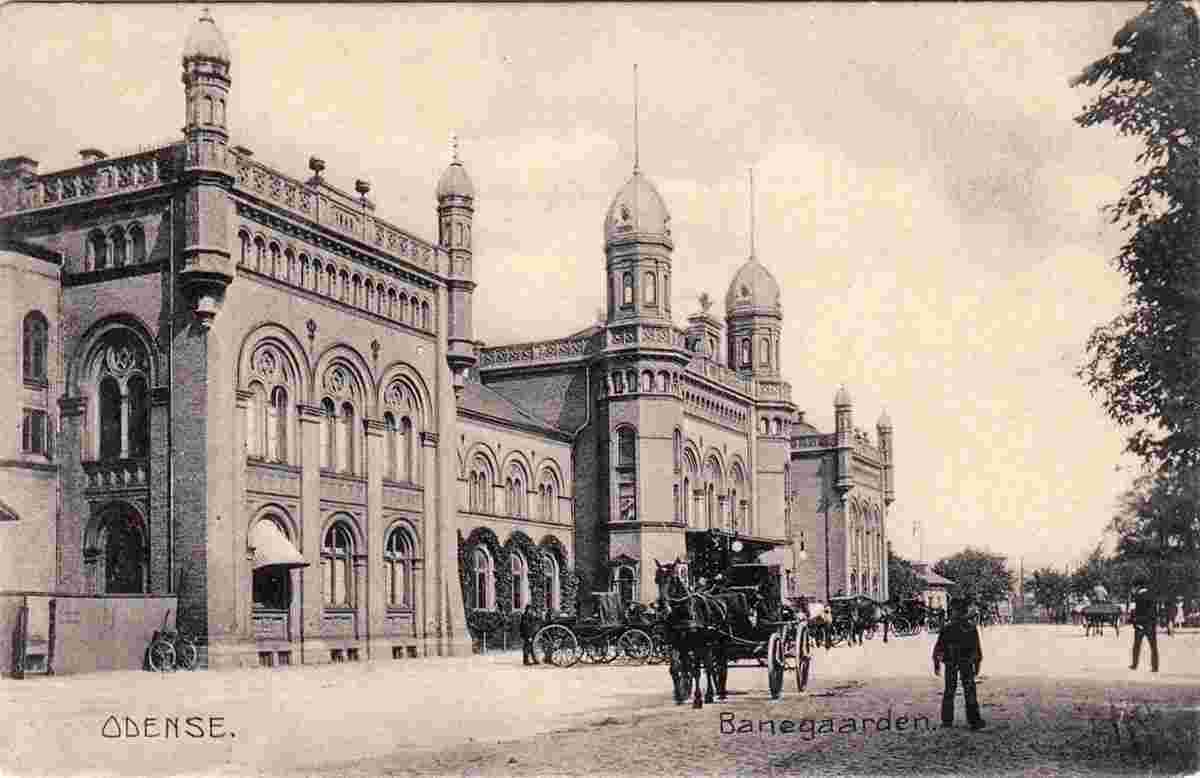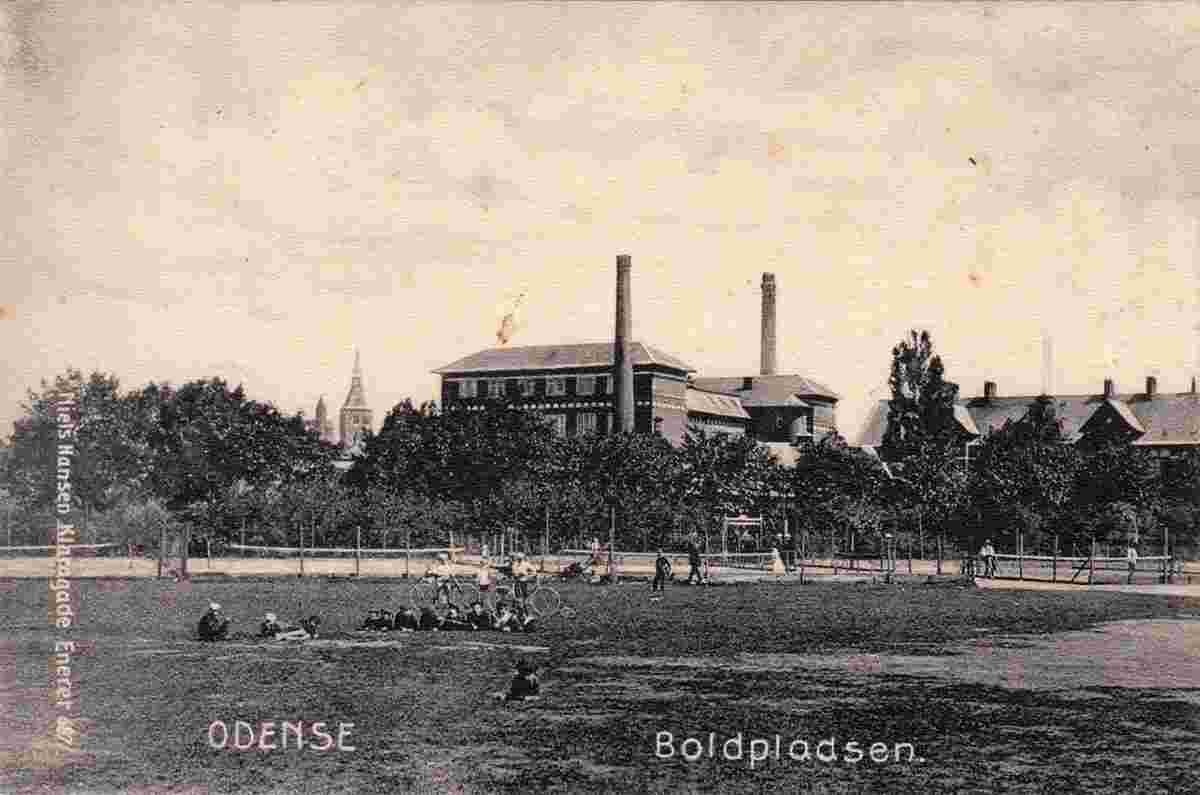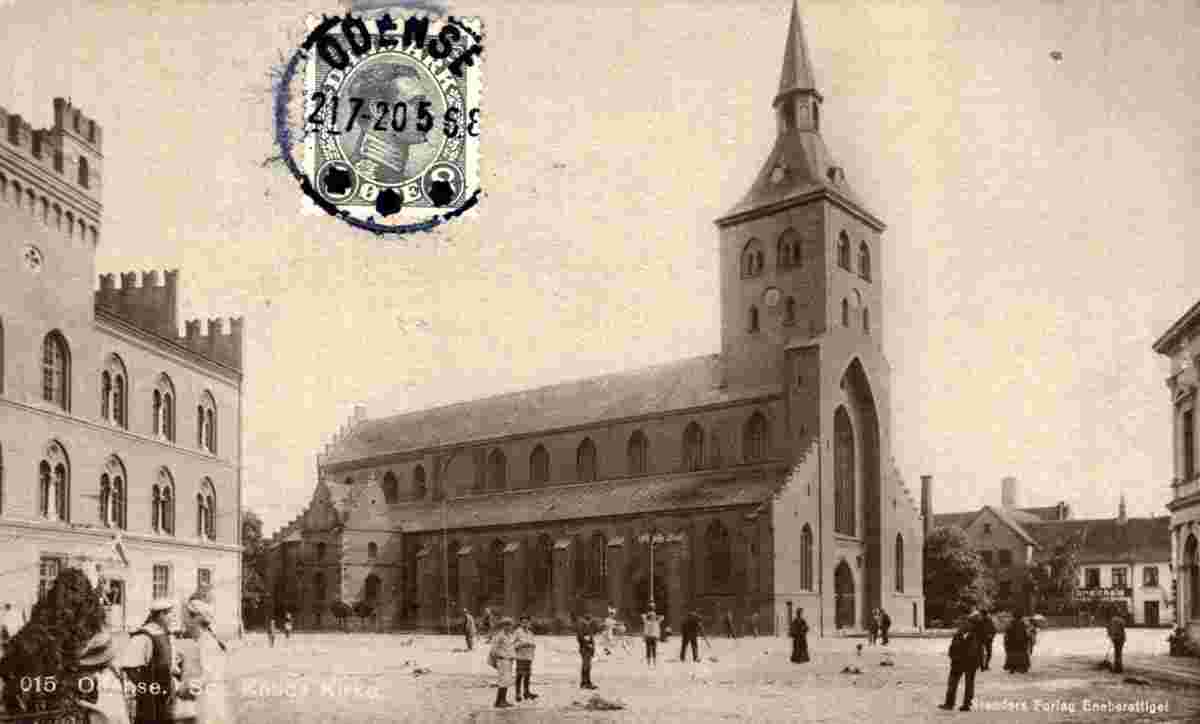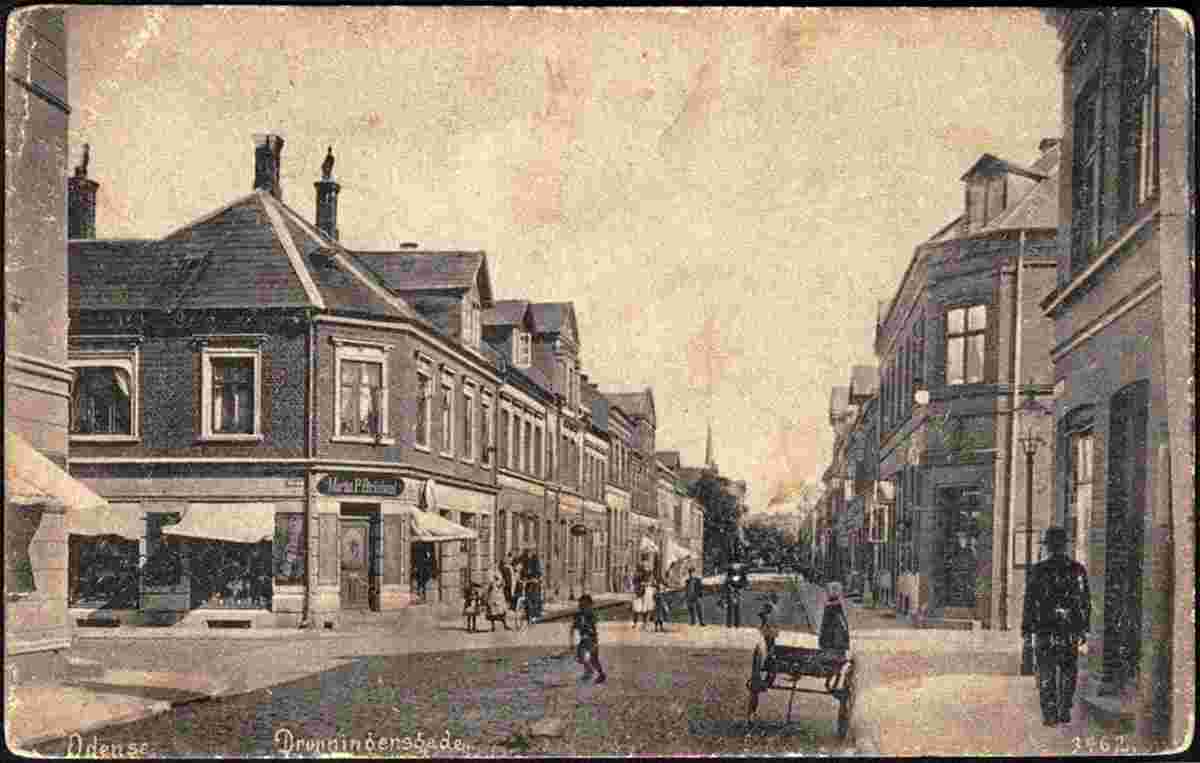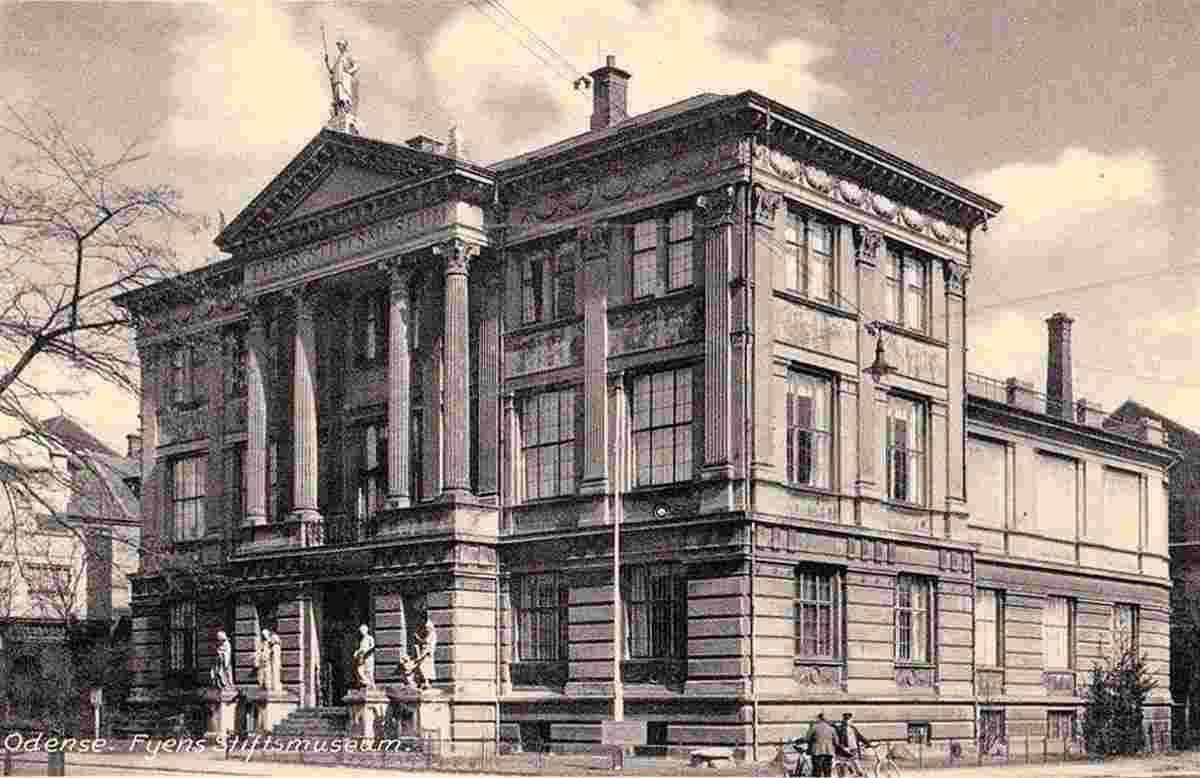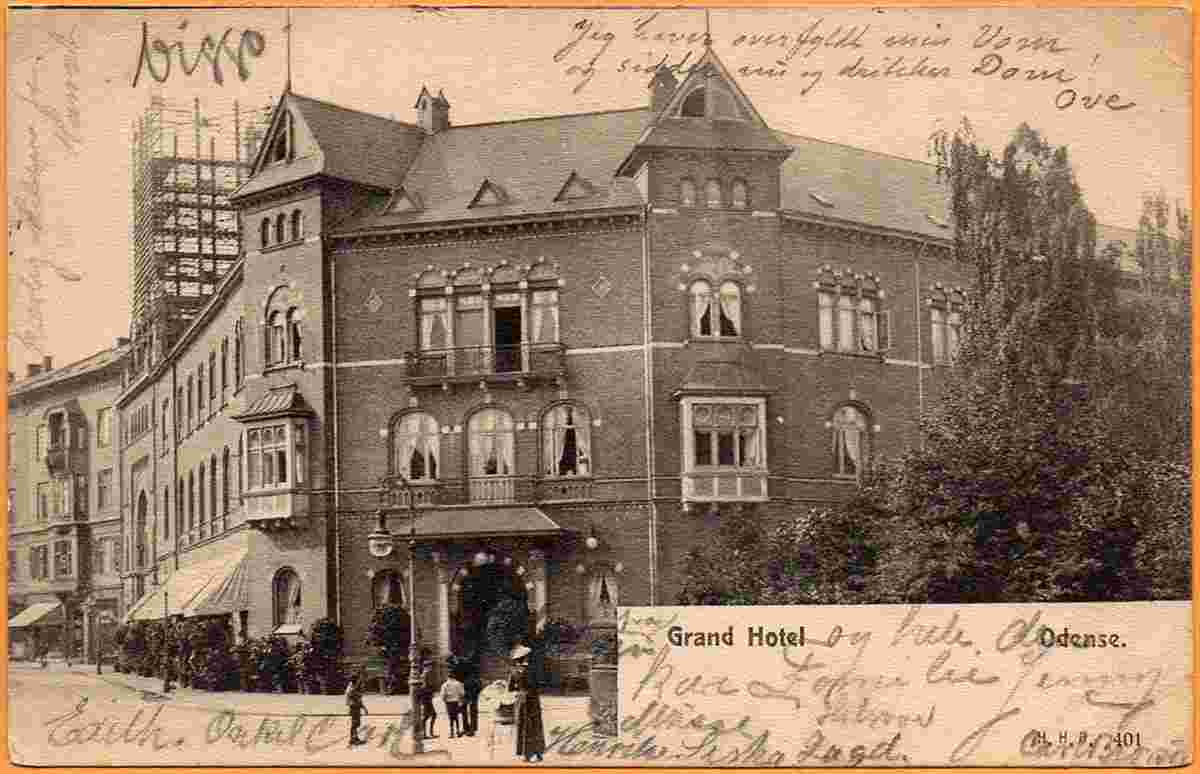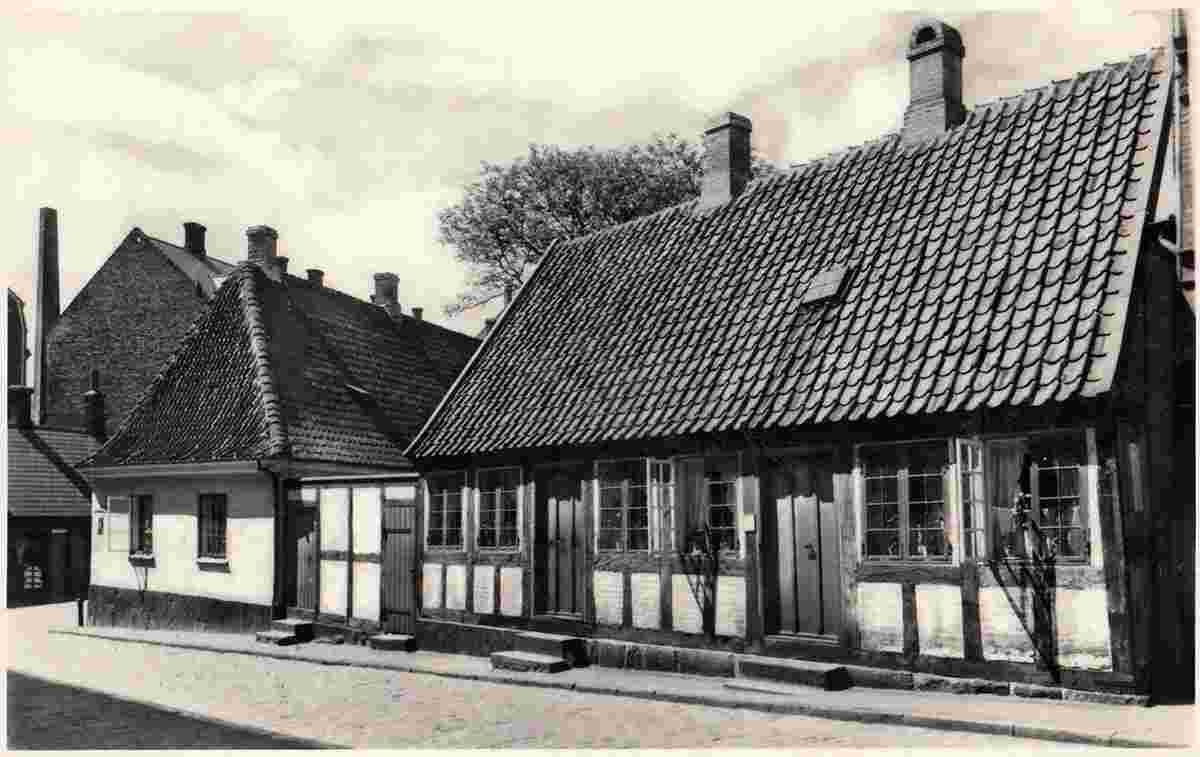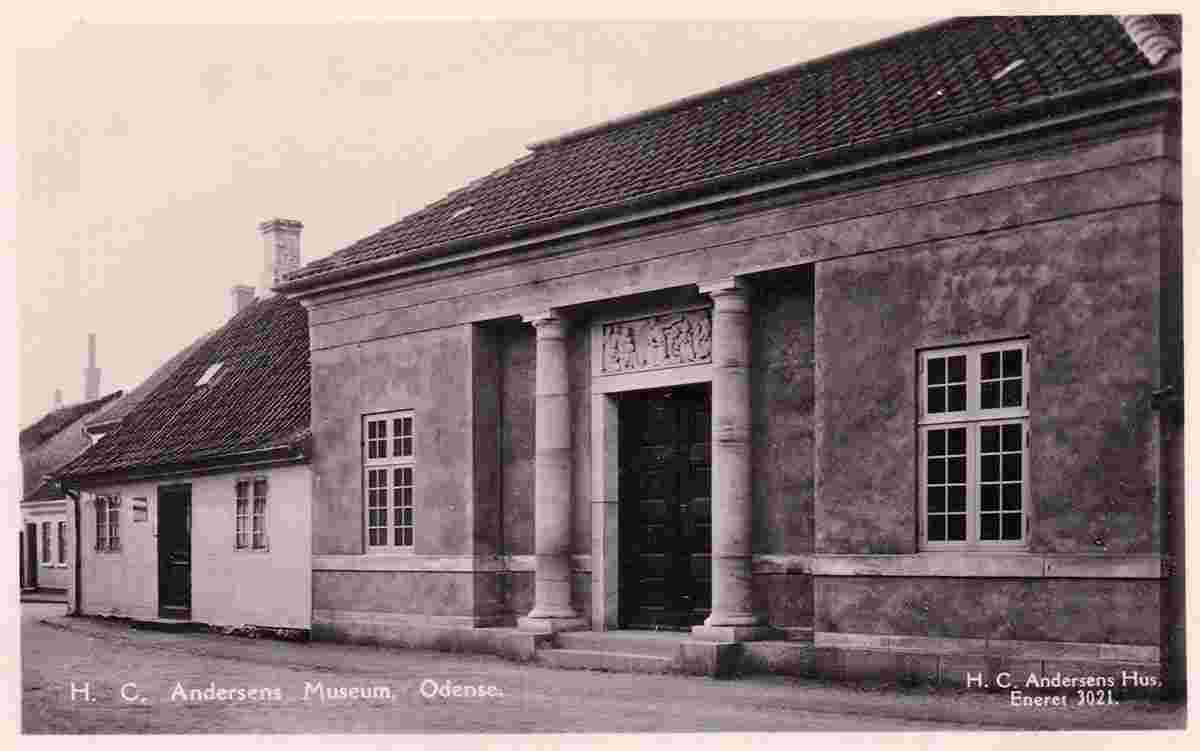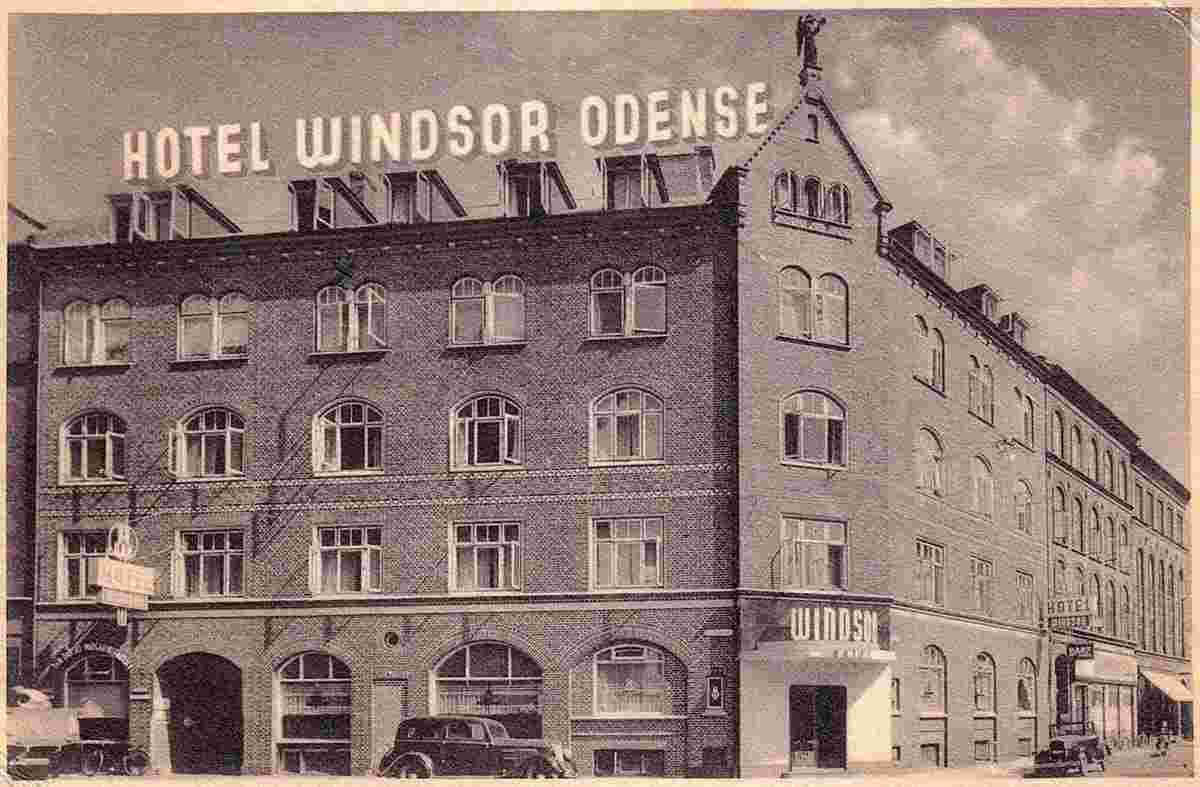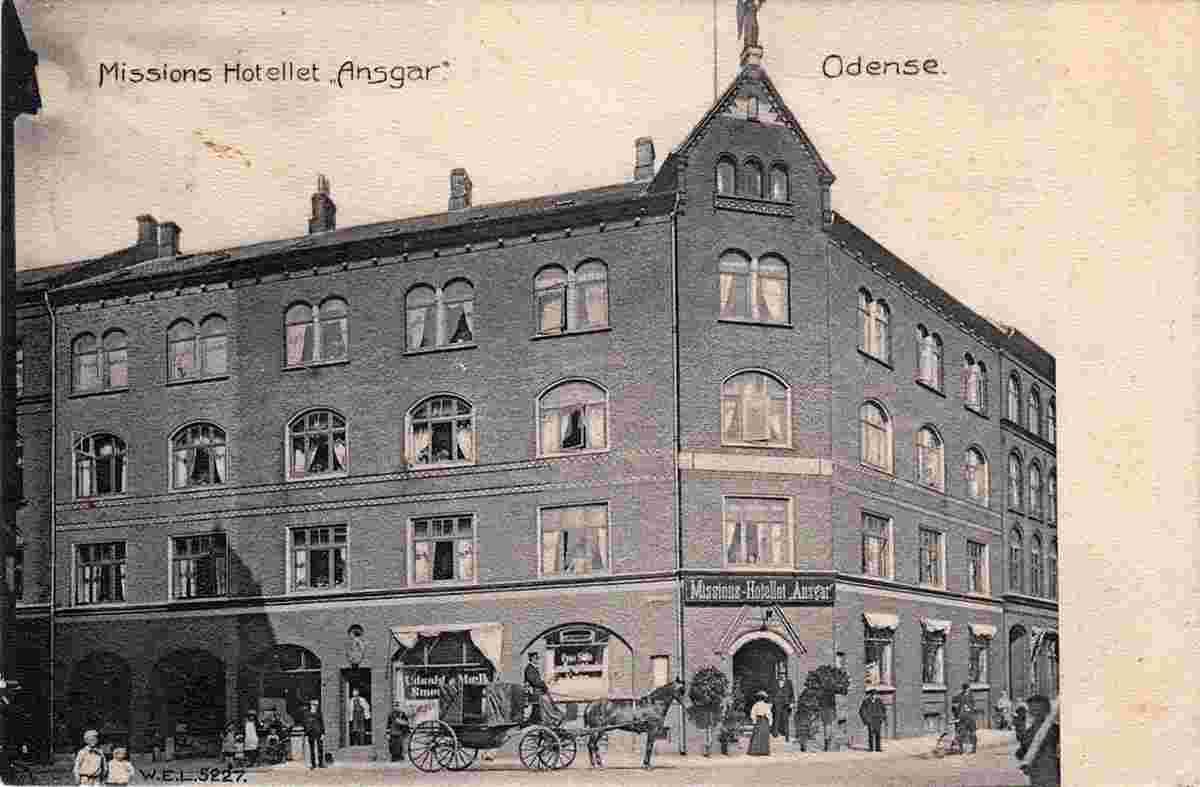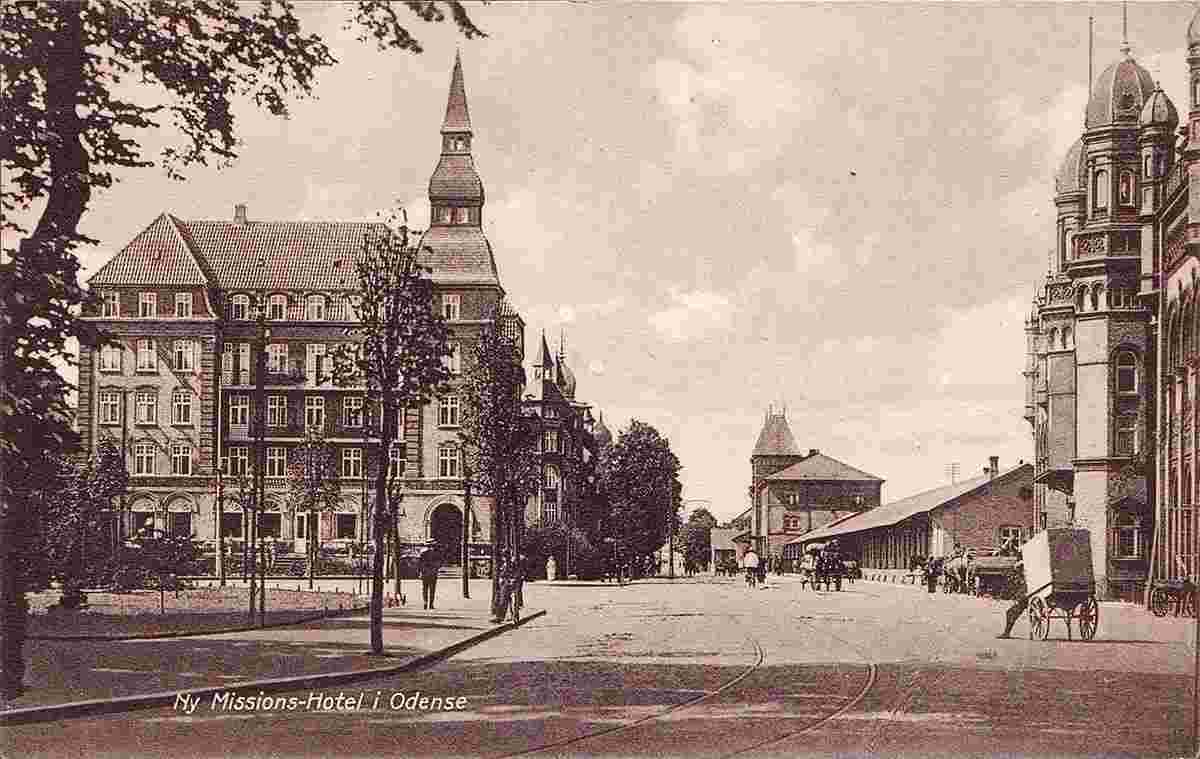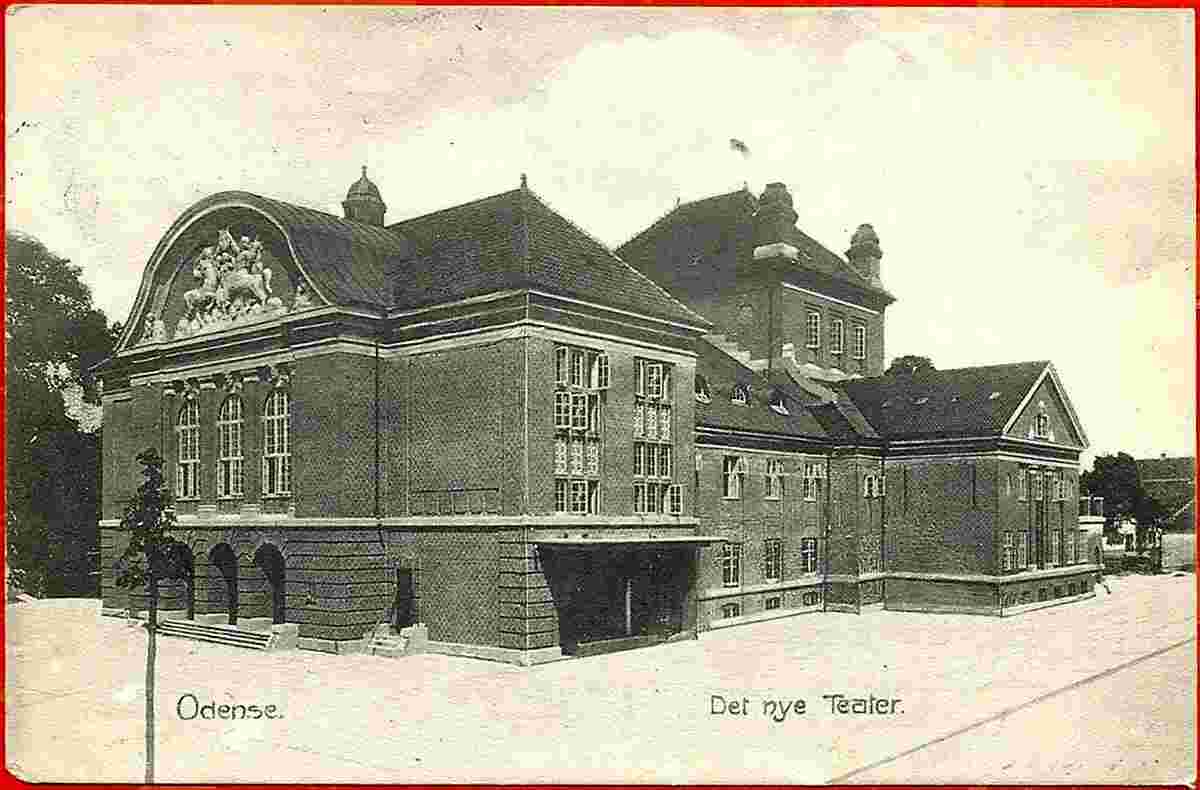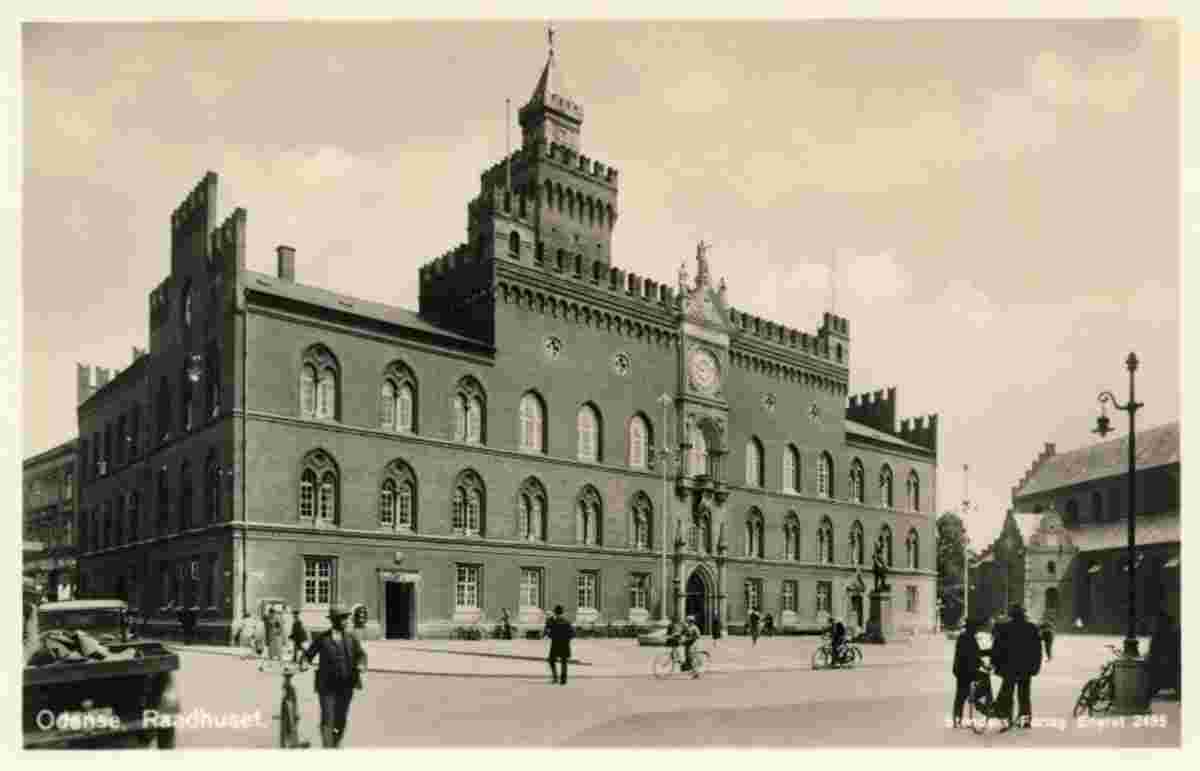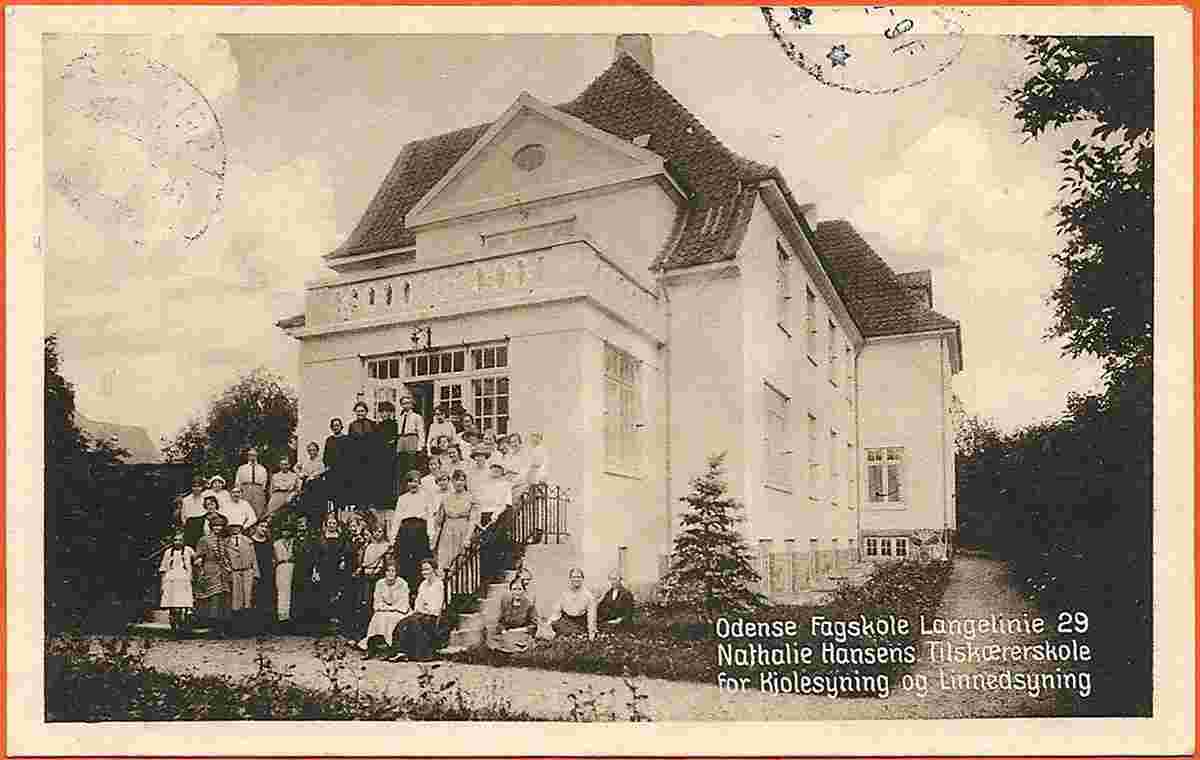Historical and old photos of Odense, Southern Denmark
HistoryEarly historyThe name Odense is derived from Odins Vé, meaning "Odin's sanctuary" as the area was known as a sanctuary for worshippers of the Nordic god, Odin. Odense is one of Denmark's oldest cities. Archaeological excavations in the vicinity show proof of settlement for over 4,000 years since at least the Stone Age. The earliest community was centred on the higher ground between the Odense River to the south and Naesbyhoved Lake (now dry) to the north. Nonnebakken, one of Denmark's former Viking ring fortresses, lay to the south of the river. Today, Odense's Møntergården Museum has many artefacts related to the early Viking history in the Odense area. The Vikings built numerous fortifications along the river banks to defend it against invaders coming in from the coast. The city celebrated its thousandth anniversary in 1988, commemorating the first mention of the town's name in a letter dated 18 March 988 from the German Emperor Otto III which granted rights to Odense and neighbouring settlements. The first church in Odense appears to have been St Mary's, probably built in the late 12th century. The territory, previously part of the vast Archbishopric of Hamburg, was created a Catholic diocese in 988. The first recorded bishops of Odense were Odinkar Hvide and Reginbert, who was consecrated by Archbishop Æthelnoth of Canterbury, in 1022. Recent excavations have shown that from the early 11th century, the town developed in the area around Albani Torv, Fisketorvet, Overgade and Vestergade. By 1070, Odense had already grown into a city of stature in Denmark. Canute IV of Denmark, generally considered to be the last Viking king, was murdered by unruly peasants, discontent with the high taxes he imposed on the town, in Odense's St Alban's Priory on 10 July 1086. He was canonized in 1100. The priory no longer exists, although a church has been situated on the site since about 900. At the beginning of the 12th century, Benedictine monks from England founded St Canute's Abbey. It was here the English monk Ælnoth wrote Denmark's first literary work, Vita et Passio S. Canuti (The Life and Passion of St Canute). Canute's shrine in Odense Cathedral (which was attached to the priory) attracted pilgrims throughout the Middle Ages. Middle AgesIn the Middle Ages, a number of churches and monasteries were built in the town. St Canute's Church (Skt. Knuds Kirke), now the cathedral, dates from the end of the 13th century and was closely connected to the Benedictine Order. The town's other old churches are St Mary's (Vor Frue Kirke) and St John's (Skt. Hans Kirke) with its adjacent monastery. Greyfriars Monastery (Gråbrødre Kloster) was founded by the Franciscans in 1279. In 1247 Odense was burned by Abel of Denmark during conflicts with his brother King Erik IV. The cathedral had to be completely rebuilt. Nevertheless, the town continued to flourish as a commercial centre, and was charted in 1335. The city thrived economically during the Middle Ages, attracting many merchants and craftsman who traded their goods. In 1482 Bishop Karl Rønnov brought the German printer Johann Snell to Odense to print a short prayer book, Breviarium Ottoniense, considered to be the first work to be printed in Scandinavia. In parallel Snell printed De obsidione et bello Rhodiano, an account of the Turkish siege of the island of Rhodes. After the Danish Reformation, involving the suppression of the Catholic bishopric in 1536, the city enjoyed a sustained period of prosperity from the 1530s to the mid-17th century, becoming northern Funen's commercial centre. One of the main sources of income was the sale of cattle, providing substantial funds for the construction of fine half-timbered houses for the local merchants. The local nobility also participated in the city's development by building residences where they spent the winter months. But the city's prosperity came to an abrupt end in the late 1650s heavy taxes were imposed after the end of the Swedish Wars. A period of stagnation ensued until the end of the 18th century. From the 16th century the town was the meeting-place of several parliaments, and until 1805 Odense was the seat of the provincial assembly of Funen. By 1700 Odense's population was about 4,000. DevelopmentDramatic changes began in Odense in the 18th century to modernise the city and a great plan was drawn up for development. In 1720, Frederick IV ordered the rebuilding of Odense Palace, partly on the foundations of the 13th century St. Hans’s Monastery, and the construction of St Hans’s Church by the Knights Hospitallers. An 8 kilometre (5.0 mi) long, 7.5 metre (25 ft) deep canal from Odense Harbour to Odense Fjord was built between 1796 and 1806 to facilitate the growth of Odense as a port city, radically increasing its level of trade and population. Founded in 1796, Odense Teater is the first provincial theatre in Denmark and the country's second oldest. Odense Central Library was established in 1924 and removed to Odense station in 1995. The Odense Music Library contains Denmark's largest collection of phonograms. From the 1840s, the city enjoyed a period of rapid expansion beyond its traditional boundaries, becoming Denmark's second largest city. The city gates were demolished in 1851 and soon afterwards development extended to the area south of the river. Glove production, which had begun in the 18th century, developed into one of the most important industries while the harbour facilities were further expanded. In 1853 Denmark's first modern water and gas works were opened in Odense. Commerce was further boosted by the building of a railway across Funen in 1865, and Odense became one of Denmark's largest rail junctions. All this provided an ideal basis for industrialisation, attracting a wide range of industries including iron and metals, textiles, and food and beverages. Separate areas of the city were devoted to increased industrial and residential expansion, and the population of the city began to grow markedly; by 1900 it had 35,000 inhabitants. Modern historyOdense's most famous landmark was Odinstårnet (The Odin Tower) constructed in 1935, as the second-tallest tower in Europe, only surpassed by the Eiffel Tower with its 177 meters. Odinstårnet was blown up by a Danish Nazi group in 1944 and has never been rebuilt. However, a miniature model now stands in Odinsparken in the area where the original was located. During the German occupation in the Second World War, Odense's general strike in August 1943 contributed to terminating collaboration with the Germans. Until the beginning of the Danish industrial revolution, Odense was also the second-largest city in modern Denmark, but has in recent times been overtaken by Aarhus. From the 1960s Odense increasingly became a cultural hub, with the establishment of a university in 1966 and the launching of trade shows, including the large Odense Congress Centre. In 1988 a major national television network, TV2, was established in Odense. In celebration of the thousandth anniversary in 1988, a forest, Tusindårsskoven (meaning "The Thousand Year Forest") was planted. In 2005 the city celebrated the 200th anniversary of the birth of Hans Christian Andersen. The Odense Steel Shipyard (Staalskibsvæeft), which since 1996 had been Denmark's largest shipbuilding facility, closed in 2012 as a result of international competition. Opened in 1919 by A.P. Møller, it latterly produced container ships for Mærsk, the parent company. The Lindø site was sold to the Port of Odense (Odense Havn) who are developing the Lindø Industrial Park. Origin: en.wikipedia.org | |||||||||||||
 |
Old historical photos and images of Odense, Denmark
Gamle historiske fotos og billeder af Odense, Danmark |
| Main page • Countries of Europa • Cities of Denmark |
| Robinson Rd, CB 13862 Nassau, NP, The Bahamas |


